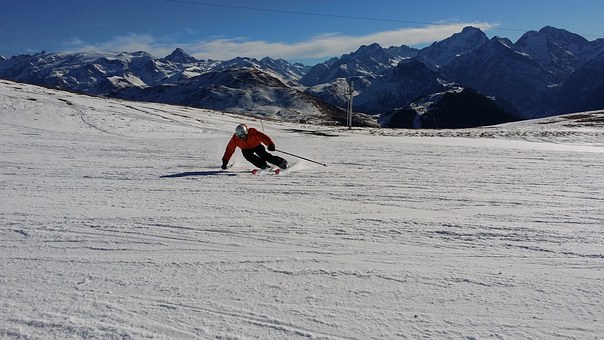
Figure 1: Professional road cyclist using modern biking technology [8].
Abstract
Engineering has become deeply rooted in the evolution of road biking, transforming a simple mode of transportation into a high-performance machine. Through advancements in material sciences and aerodynamics, the sport explores all types of innovation to optimize performance. These engineering contributions have revolutionized both the bicycle itself and the sport of cycling, changing how the world views both today.
Introduction
When most people think of a bike, they envision a metal frame and two wheels, compiled into a simple machine, getting you from point A to point B. Early in the history of cycling, bicycles served the purpose of being a simple and mechanical object used as an alternative to horses and carriages. However, as the world advances so do all aspects of life. Bicycles took on more components to facilitate easier and more effective use. The object was converted not only into a faster means of transportation but developed into the sport we know today: cycling. However, as little as one might consider, engineering principles that stem beyond what we physically can see on these machines have affected not only the bicycles themselves, but the great sport of cycling that has come to be. We witness how engineering discoveries shift prioritizations of advancement in the bicycle, focusing on undeveloped areas such as aerodynamics and different bicycle components. Engineering has allowed advancements that were once exclusive to top athletes, to now trickle down and benefit all in the cycling community.
Consider this perspective: if a bike becomes lighter, it will be easier to move, and therefore be faster. This thought pioneered initial advancements in the sport. Limited technology allowed for advances in bike frames and sizes to be adjusted to reduce the weight of the vessel. With a successful correlation between weight reduction and increased speed, this was considered the ultimate way to better engineer the bicycle. However, as a bike can only shed so much weight, future successes hit a point of diminishing returns. Engineering in the sport of cycling took a major turn in the late 1980s with the shift to aerodynamics and focus on parts other than the frame. With the engineering of the sport, we have entered a period for the first time where weight may not be considered the most important factor. Moreover, the focus on these findings has allowed bicycles to advance far enough to affect every consumer ranging from amateur to professional cyclists.
Beginnings of Bike Engineering: A Brief History
Going back to the humble beginnings of bikes, German inventor Karl von Drais developed the first bicycle in 1817. Consisting of a wooden beamed frame, two wooden wheels, leather cover tires, and iron rims, this object revolutionized the world of transportation [1]. Over the course of nearly 70 years, the composition of the bicycle had transformed, taking on many different shapes and changing components, until it reached the common bike we have today, earlier known as the “safety bicycle” [2].

Figure 2: 1880 penny-farthing bicycle on left. 1886 Rover safety bicycle on right (first embodiment of the modern arrangement) [2].
The safety bicycle, developed by John Kemp Starley, embodied the first modern arrangement of the bicycle. The largest change from previous models was the chain driver, connecting the pedals and cranks to the rear wheel, allowing for two small wheels of equal size. Other components such as gears, direct front steering, low pedals, and saddle were new additions that continued into the modern bicycle. The introduction of the diamond frame was also one of the first major considerations to biking efficiency. This common frame design consists of two triangles, one from the steering to the seat post and the other from the seat post to the rear wheel. Technology from the safety bicycle continued into the modern world of cycling as the frame allowed for a low center of gravity and additional standover clearance for better body positioning.
Early designs were centered around durability and functionality, with little thought to weight or high-performance speed. By the late 1800s, after the creation of the “safety” bicycle, most frames were made of steel instead of wood or cast iron. Not only had steel already been heavily researched and a standard metal in other industries, but it was also a more affordable material for mass production. However, its light cost came with a heavy weight. While these bikes were strong, it would be common for a bike to weigh in at 50-80 pounds [1].
Material Science: Carbon Fiber and Beyond
As the sport of cycling began to evolve, race bikes were engineered to increase performance. Up until near the 21st century, the main logical solution was that lighter bikes equated with faster performance. The metal composition of bicycles has evolved, moving from wood to steel, aluminum, titanium, and carbon-fiber, to shed the excess weight. Influenced by the aviation and motor racing industries, bicycle frames took after plane and car materials transformation.
Moving away from steel, aluminum entered the field once bikes started to develop into performance-based products. Relatively affordable, aluminum frames are notably lighter than steel, yet retain just as much strength. Due to aluminum’s decreased density, engineers were able to maintain wall thickness, frames would be lighter than steel and decrease its weight by half. Aluminum’s physical property of low flexibility drove the development of increased tube diameter and stiffness in the frame while maintaining an overall lighter vessel.

Figure 3: Comparison of wall thickness of steel to aluminum frames of lesser weight [1].
Titanium entered the biking industry during the mid-20th century as an attractive alternative to steel and aluminum. In 1948, the US government began funding endeavors with titanium, integrating the alloy into aircraft, spacecraft, and other military purposes after realizing its use [14]. Other industries, including cycling, began to follow. Lighter than steel and just as strong, titanium brings new advancements to bike design with its unique combination of flexibility, shock absorption, and corrosion resistance. Known for its low density, titanium maintains a comparable stiffness-to-weight ratio than to steel. While it’s not as stiff as aluminum or carbon fiber, titanium worked its way into other sectors of biking, such as mountain and gravel for its shock absorption technology. Engineered to provide a smoother ride, and holding the unique property of corrosion resistance, titanium is ideal for rough terrains. Titanium frames remain a premium choice in the cycling industry even though they are 15 times more expensive than steel.
Carbon fiber was universally introduced into cycling in the 2000s, being hailed for its lightweight properties. Its initial emergence stemmed from the automotive industry when the material was integrated into high-performance vehicles during the 1990s [15]. Thanks to its stiffness-to-weight ratio, the customizability the material provides, and resistance to fatigue, designers are allowed to achieve weights and frame shapes that were never possible with prior metals. Carbon fiber revolutionized the biking industry, changing the standard of the weight game. Same levels of strength, flexibility, and versatility are applied to the new frame material in terms of manufacturing. However, frames could now be produced to weigh in at less than a single kilogram (2.2 pounds) [11].
Intro to Aerodynamics: Engineering Through Wind
In the late 1980s, bike mechanics started to take a turn with the idea that weight is no longer the only factor in enhancing bike performance. Aerodynamics, the study of moving air and its interaction with solid bodies moving through it, entered the game. The final stage of the 1989 Tour De France proved the power of aerodynamics and set the stage for the shift to its focus on cycling. Greg Lemond, professional cyclist for the USA, stole the podium title winning the tour by 8 seconds. Slapping on a set of aero bars to his bike, using an aero helmet, and correcting his body positioning, Lemond took advantage of aerodynamics to bring home the gold. His victory set forth the precedent that aerodynamic efficiency was just as important as strength and skill [7].

Figure 4: Lemond winning the 1989 Tour De France on his aerodynamically designed TT bicycle [7].
Drag is a main component of aerodynamics which is the force pulling back on a moving object, creating resistance and increasing immobility. Drag is heavily affected by the shape of the moving object; round and narrow surfaces create less drag than flat and wide surfaces. More drag is produced as more air hits a surface [4]. Competitive cycling – the Tour De France specifically – is a sport that began utilizing aerodynamic research in order to minimize air resistance.
Aerodynamic drag is the main resistive force in cycling, making up to 90% of all resistance. Depending on the cyclist’s body size and shape, as well as the position on the bike, the cyclist’s body and wearables such as helmets, uniforms, skinsuits, and other components are responsible for 64-82% of total drag. The bicycle itself – including the frame, wheels, handlebar, and smaller components – makes up the remaining drag [5].
Minimizing Aerodynamic Drag: Computational Fluid Dynamics
In order to reduce the forces of aerodynamic drag, engineers use tools such as flow visualization and computational fluid dynamics (CFD) to test and visualize the drag of a cyclist and their equipment. CFD in aerodynamic testing is the science of using computers to predict gas/air flow movement around objects. Engineers use wind tunnels to simulate a controlled environment and analyze air drag. For testing, a large tube moves air toward the stationary cyclist at a controlled speed to simulate how a cyclist cuts through it. Researchers are able to see the movement of the air around the body, and how small tweaks in body positioning change the air’s circulation.

Figure 5: Airflow on three different body positions, testing aerodynamic drag [6]
One simple yet major modification that requires no physical changes to the bicycle itself is body positioning. Drag force is calculated by three major components: density of the air, a drag coefficient which is a number representing direct measurements of speed, terrain toughness, etc, and lastly the projected frontal area of a cyclist [6]. The smaller the frontal area, the less drag is created. The three positions in Figure 5 help depict the effectiveness of body positioning and decreased frontal area. With one’s body upright, a cyclist intakes the highest percentage of drag and requires the cyclist to output a greater amount of physical strength to maintain the same speed. The further you drop in the frame, the less frontal area is exposed. The second and third frames of Figure 5 show a cyclist seated in the “drops” and top bar positioning. These holds reduce drag by 14% and 32% percent in comparison to the first frame’s positioning [6]. Using visualization equipment and producing live results, cyclists can tweak errors in body position, receive immediate feedback, and witness quantifiable success with this new technology.
Within the last year, we have witnessed the power of aerodynamics as it helped secure a win in the world’s biggest cycling event, the Tour De France. In the most recent 2024 Tour De France, winner Tadej Pogačar of UAE Team Emirates took first place in the general classification. For this tour, UAE Team Emirates used the newest Colnago V4Rs model as their team race bike. Usually known for its lightweight technology and improved stiffness, the V4Rs took a turn in its 2024 model, sacrificing its weight for aerodynamics [12]. With a longer and more stretched-out frame, V4Rs receive a more aerodynamic body, allowing the rider to stay in the aero position comfortably. However, with this stretched size, they added a slight increase in weight from the V3Rs model, Colnago’s previous model [13]. Further advancements had been made to make other bike components narrower and contributed to the increased aerodynamic capacity of the V4Rs.
Pogačar’s 2024 V4Rs model didn’t focus on the traditional reduction of frame weight in order to maximize speed, but rather on its aerodynamic shape. This year’s Colnago model and its focus on aerodynamics contributed to Pogačar’s winning margin of 6 minutes 17 seconds [10]. Sacrificing industry traditions by increasing the model’s weight from the years prior, Colnago’s creation poses the question if aerodynamics overtakes the longstanding spotlight of weight reduction.
Conclusion
Engineering has transformed cycling from a mechanical sport into a science-driven competition, where aerodynamics, materials science, and testing now determine top speeds and cycling efficiency. Once an object used for simple transportation, the bicycle has transformed into a racing machine while still maintaining its everyday purpose. With the power of engineering, researchers have access to aerodynamic tools such as wind tunnels, CDF, and flow visualization testing to perfect a cyclist’s ride. Developments in frame material have allowed bicycles to expand their functionality and significantly reduce the weight of the vessel. Engineering has fine-tuned this once simple object, and changed the name of the game.
References
[1] “Science of Cycling: History of Bicycle Frames | Exploratorium,” Exploratorium: the museum of science, art and human perception, 2024. https://annex.exploratorium.edu/cycling/frames1.html (accessed Oct. 30, 2024).
[2] “Cycling History: What Was The ‘Safety Bicycle’?,” Nov. 03, 2022. https://biketips.com/safety-bicycle/ (accessed Oct. 30, 2024).
[3] “Science of Cycling: A History of Bicycling Timeline | Exploratorium,” Exploratorium: the museum of science, art and human perception. https://annex.exploratorium.edu/cycling/timeline.html (accessed Oct. 30, 2024).
[4] NASA STEM Team, “What Is Aerodynamics? (Grades 5-8) – NASA,” NASA, Mar. 01, 2017. https://www.nasa.gov/learning-resources/for-kids-and-students/what-is-aerodynamics-grades-5-8/
[5] N. Barry, D. Burton, T. Crouch, J. Sheridan, and R. Luescher, “Effect of crosswinds and wheel selection one aerodynamic behavior of a cyclist,” Procedia Engineering, vol. 34, pp. 20–25, 2012, doi: https://doi.org/10.1016/j.proeng.2012.04.005.
[6] A. Churazova, “Aerodynamics of Cycling Explained Through CFD,” SimScale, Jul. 04, 2017. https://www.simscale.com/blog/cycling-aerodynamics/
[7] B. Lin, “Winning the Tour de France by 8 Seconds: Greg LeMond’s 1989 Bottecchia TT Bike,” The Pro’s Closet, Sep. 11, 2024. https://www.theproscloset.com/blogs/news/winning-the-tour-de-france-by-8-seconds-greg-lemonds-1989-bottecchia-tt-bike (accessed Oct. 31, 2024).
[8] “Road cycling,” Wikipedia, May 03, 2020. https://en.wikipedia.org/wiki/Road_cycling
[9] W. Jones, “Colnago V4Rs first-ride review: A bike perhaps best left to the professionals,” cyclingnews.com, Dec. 16, 2022. https://www.cyclingnews.com/reviews/colnago-v4rs-review/ (accessed Oct. 31, 2024).
[10] N. Zaccardi, “Tadej Pogacar wins third Tour de France title, joins cycling legends,” NBC Sports, Jul. 21, 2024. https://www.nbcsports.com/news/tadej-pogacar-tour-de-france-2024 (accessed Nov. 1, 2024).
[11] Chase, “Engineering.com – How to Design the Lightest Possible Bike – And Still Sleep at Night,” Collier Aerospace, Mar. 09, 2017. https://collieraerospace.com/2017/03/09/engineering-com-how-to-design-the-lightest-possible-bike-and-still-sleep-at-night/ (accessed Nov. 02, 2024).
[12] “V4Rs road bike | Colnago,” Colnago.com, 2022. https://www.colnago.com/en-us/premium-bikes/v4rs-bike (accessed Nov. 02, 2024).
[13] S. Smythe, “Colnago V4Rs,” cyclingweekly.com, May 09, 2023. https://www.cyclingweekly.com/reviews/road-bikes/colnago-v4rs-bike-review-ultimate-racing-weapon-thats-not-for-the-faint-legged (accessed Nov. 02, 2024).
[14] “Titanium Overview – History, Developments, and Applications,” Titanium Processing Center. https://www.titaniumprocessingcenter.com/titanium-history-developments-and-applications/
[15] K. Harrison, “Evolution of Carbon Fiber: From Discovery to Global Dominance,” Environment Energy Leader, Jan. 12, 2024. https://www.environmentenergyleader.com/stories/evolution-of-carbon-fiber-from-discovery-to-global-dominance,651 (accessed Dec. 09, 2024).




